
Migration in Four Parts, 2017
Glass, collage, acrylic, resin, steel
62" x 94" x 17"
Glass, collage, acrylic, resin, steel
62" x 94" x 17"

Migration in Four Parts (detail), 2017
Glass, collage, acrylic, resin, steel
62" x 94" x 17"
Glass, collage, acrylic, resin, steel
62" x 94" x 17"

Migration in Four Parts (detail), 2017
Glass, collage, acrylic, resin, steel
62" x 94" x 17"
Glass, collage, acrylic, resin, steel
62" x 94" x 17"


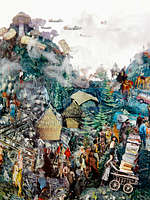










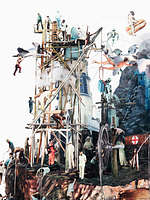
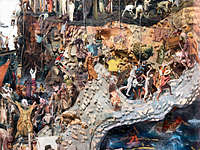






The following statement is so self-evident that it unfortunately requires no qualification: the world is everywhere on fire. As such, we must ask ourselves: how do we listen and learn in a space that is at once intimately entangled, but also muddled by unequal distributions of wealth, resources, people, and development? Although Dustin Yellin’s Migration in Four Parts, 2017, can be read as a commentary on contemporaneous issues relating to the mass movement of people, it would be wise to remember that humanity is, and will always be, on the move. While historical forces differ, artists have always tapped their own journeys, weather literal or metaphorical, as well as those of their ancestors, to shape identity and culture. Not surprisingly, consciousness itself can be said to be a migration of ideas from one person to another. While scenes of conflict and resolution abound, Migration in Four Parts is no history painting. Instead of depicting a group whose identity can be fixed, anonymous figures, and mythical beings–each capped by an animal head no less–unfurl before the viewer. Teasingly, the artist provides a bird’s eye view of the scene; however, no principle character or setting is privileged. Following mannerist tropes, spectators are tasked to read a massive, yet nonhierarchical landscape in order to search for some discursive meaning of their own making.

Migration in Four Parts (detail), 2017
Glass, collage, acrylic, resin, steel
62" x 94" x 17"
Glass, collage, acrylic, resin, steel
62" x 94" x 17"

Migration in Four Parts (detail), 2017
Glass, collage, acrylic, resin, steel
62" x 94" x 17"
Glass, collage, acrylic, resin, steel
62" x 94" x 17"

Migration in Four Parts (detail), 2017
Glass, collage, acrylic, resin, steel
62" x 94" x 17"
Glass, collage, acrylic, resin, steel
62" x 94" x 17"

Migration in Four Parts (detail), 2017
Glass, collage, acrylic, resin, steel
62" x 94" x 17"
Glass, collage, acrylic, resin, steel
62" x 94" x 17"
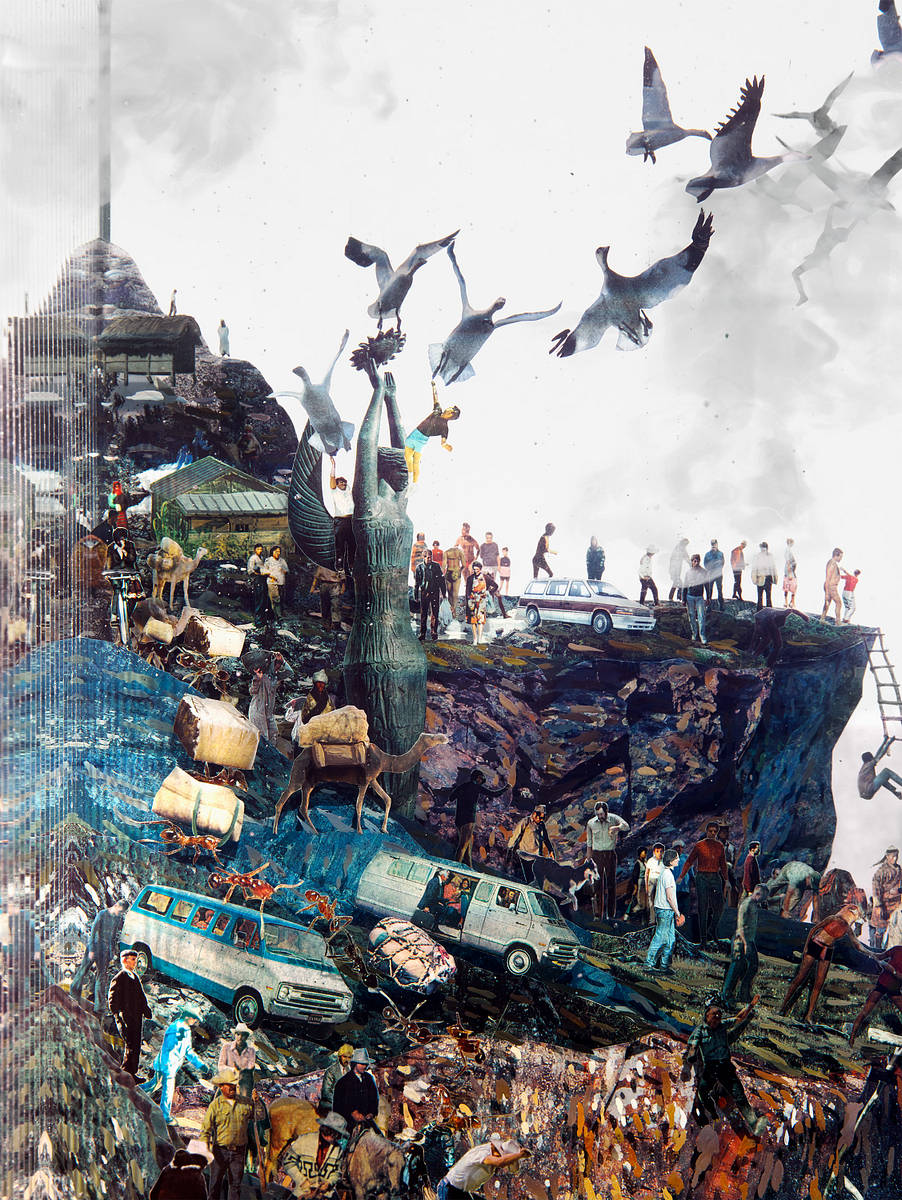
Migration in Four Parts (detail), 2017
Glass, collage, acrylic, resin, steel
62" x 94" x 17"
Glass, collage, acrylic, resin, steel
62" x 94" x 17"

Migration in Four Parts (detail), 2017
Glass, collage, acrylic, resin, steel
62" x 94" x 17"
Glass, collage, acrylic, resin, steel
62" x 94" x 17"

Migration in Four Parts (detail), 2017
Glass, collage, acrylic, resin, steel
62" x 94" x 17"
Glass, collage, acrylic, resin, steel
62" x 94" x 17"

Migration in Four Parts (detail), 2017
Glass, collage, acrylic, resin, steel
62" x 94" x 17"
Glass, collage, acrylic, resin, steel
62" x 94" x 17"
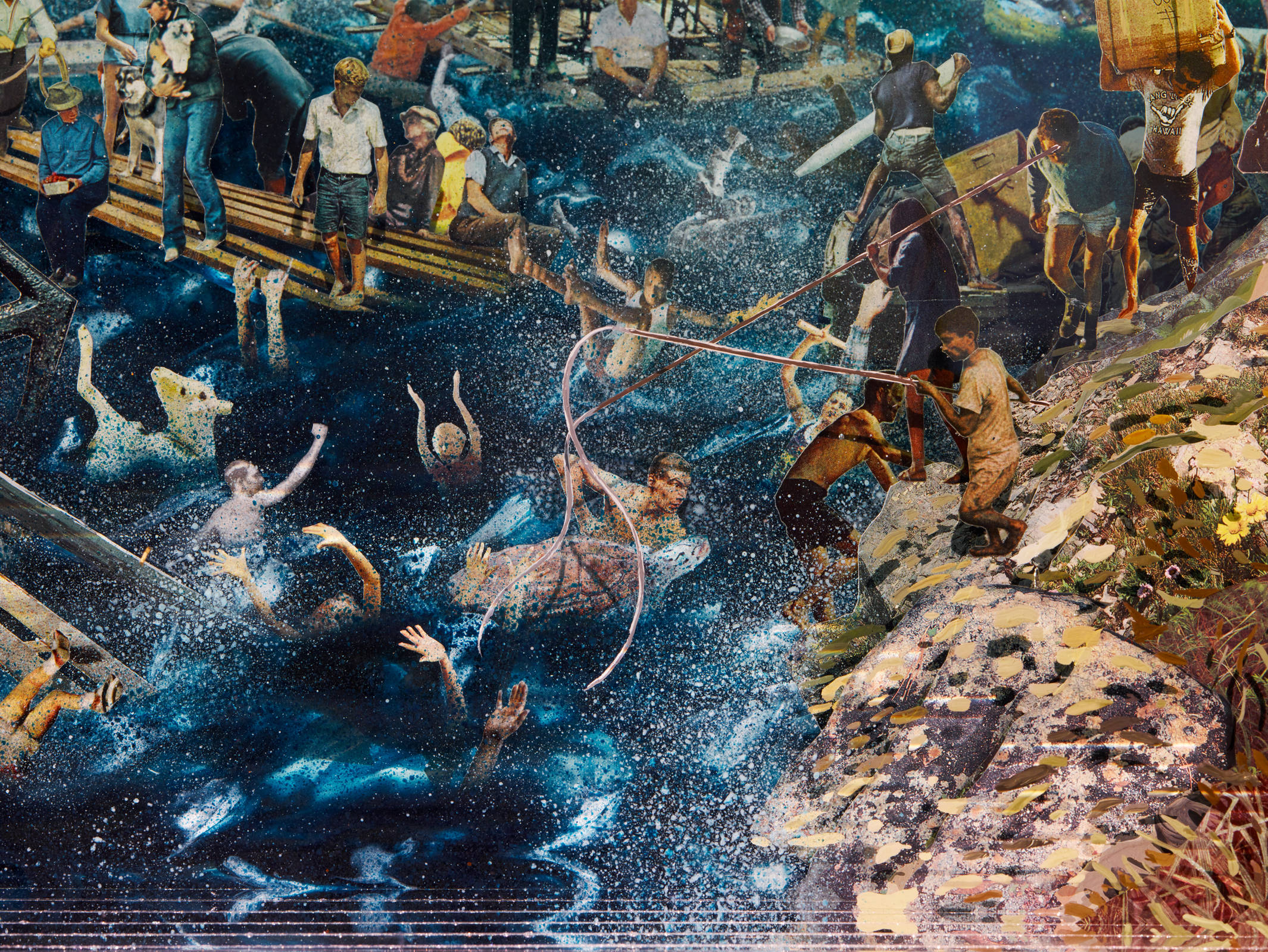
Migration in Four Parts (detail), 2017
Glass, collage, acrylic, resin, steel
62" x 94" x 17"
Glass, collage, acrylic, resin, steel
62" x 94" x 17"

Migration in Four Parts (detail), 2017
Glass, collage, acrylic, resin, steel
62" x 94" x 17"
Glass, collage, acrylic, resin, steel
62" x 94" x 17"

Migration in Four Parts (detail), 2017
Glass, collage, acrylic, resin, steel
62" x 94" x 17"
Glass, collage, acrylic, resin, steel
62" x 94" x 17"

Migration in Four Parts (detail), 2017
Glass, collage, acrylic, resin, steel
62" x 94" x 17"
Glass, collage, acrylic, resin, steel
62" x 94" x 17"

Migration in Four Parts (detail), 2017
Glass, collage, acrylic, resin, steel
62" x 94" x 17"
Glass, collage, acrylic, resin, steel
62" x 94" x 17"

Migration in Four Parts (detail), 2017
Glass, collage, acrylic, resin, steel
62" x 94" x 17"
Glass, collage, acrylic, resin, steel
62" x 94" x 17"

Migration in Four Parts (detail), 2017
Glass, collage, acrylic, resin, steel
62" x 94" x 17"
Glass, collage, acrylic, resin, steel
62" x 94" x 17"

Migration in Four Parts (detail), 2017
Glass, collage, acrylic, resin, steel
62" x 94" x 17"
Glass, collage, acrylic, resin, steel
62" x 94" x 17"
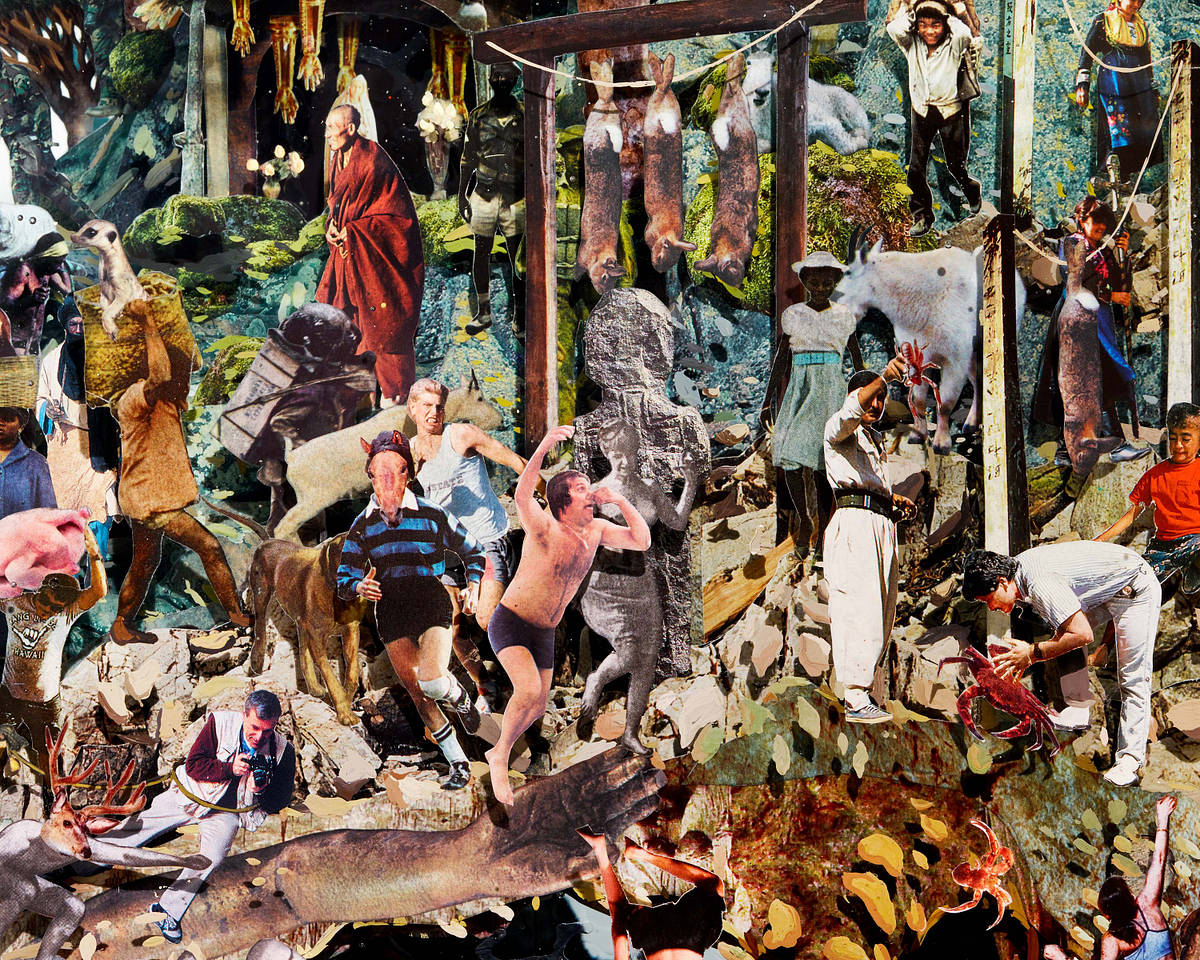
Migration in Four Parts (detail), 2017
Glass, collage, acrylic, resin, steel
62" x 94" x 17"
Glass, collage, acrylic, resin, steel
62" x 94" x 17"

Migration in Four Parts, 2017
Glass, collage, acrylic, resin, steel
62" x 94" x 17"
Glass, collage, acrylic, resin, steel
62" x 94" x 17"